An entrepreneur and fashion blogger from the Philippines, Camille Co-Koro is a proud foster fail to Pixie—a five-month-old aspin [short for asong Pinoy or Philippine native dog] that she took in from Pawssion Project. The 31-year-old dog lover shares what it was like to care for a foster pup for the first time (a sickly one at that!), and how she grew to love her first adopted pet.
Help out by donating to Pawssion Project
With your kind assistance, Pawssion Project can help save the lives of unwanted animals and create a safe haven for them in Negros Occidental, Philippines.
Waldo’s Friends (WF): Hi Camille! How did Pixie enter your life?
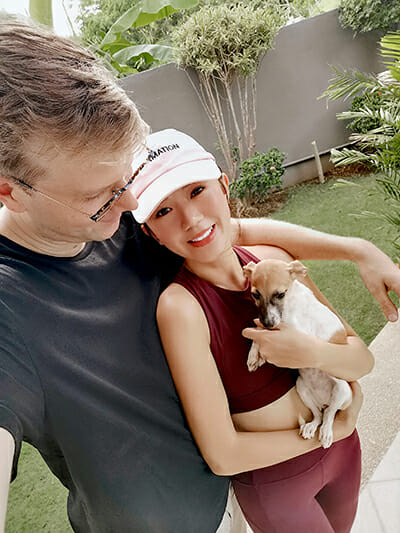
Camille Co-Koro (CCK): I’ve already been toying with the idea of adopting a dog, and I’ve been discussing it with my husband Joni for a while now. The only thing stopping us was my husband’s allergy. He’s a huge dog lover, but he has really bad allergic reactions to dogs. This is why when we first decided to get a dog together, we chose a poodle which is considered hypoallergenic by many. But even so, our poodle’s saliva can still trigger his allergies.
Then one morning, I saw Pawssion Project’s Instagram posts about the planned mass euthanasia of dogs locked in our city’s dog pound. I don’t know why, but I just decided right then and there that we should help save the dogs. If we can’t adopt, then at least we should foster one. We went to the pound that same day I saw the post and met our baby Pixie.
She wasn’t the first dog that caught my eye. I originally wanted a different puppy, but the caretaker claims she was promised to someone else already. Pixie was in the same kennel as that dog. She was just in the corner, lying down. She wasn’t sweet and she didn’t come to us. I held out my finger. She licked it a bit. I took her and carried her. She still didn’t move. She just laid in my arms. When I asked the caretaker why she seemed so lethargic, he said, “She’s just sleepy, but she’s very sweet. She’s completely fine.”
We took her to the vet right away. I thought it was just a quick checkup. I wanted her to get her first round of shots and grooming because she was covered in ticks and fleas. When we got to the clinic, the vet got alarmed because she noticed Pixie’s gums and tongue were so pale. They were turning purple already! She tested her blood right away and it tested positive for ehrlichia. I still remember how the vet told me Pixie’s state. “She has ZERO blood. She has to get blood transfusion right away. I’m afraid she might not last the night if she doesn’t get it today.”
Honestly, it felt like a race! I posted online and asked all my friends. I didn’t know if my poodle Penny could donate because she’s a tiny dog. I felt so helpless, but I knew in my heart that Pixie is meant to live. It felt like it was more than coincidence that we found her in time—just in time to save her life. And true enough, her blood donor also arrived just before the clinic was about to close. She was a complete stranger that lived in the same village as us. A few minutes after, another neighbor we didn’t know came with her dog. I couldn’t help but cry. I was so moved that there were strangers who selflessly went out of their way to help us.
My Pixie is a fighter. She is a true miracle dog. Our vet didn’t think she would recover even with the blood transfusion. She was already preparing me for the worst because she’s seen cases similar to Pixie and they weren’t as lucky.
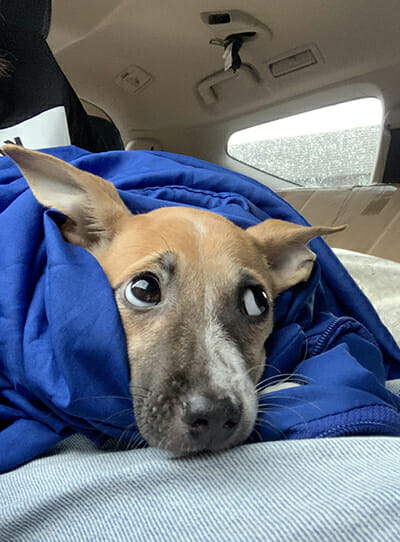
WF: Before Pixie, did you have previous experience with animal fostering?
CCK: I didn’t. My husband knew when I said we’ll “foster” that we’ll just end up adopting. He was right all along. He knew I wouldn’t be able to give Pixie up. Honestly, I felt like I was betraying her if I gave her away. She’s been maltreated and rejected by so many. I didn’t want her to feel we rejected her as well. She’s meant for us really.
WF: How did your previous pets Pepper and Penny initially react to Pixie’s presence? How are they now as paw siblings?
CCK: Pepper is my first dog. She wasn’t socialized well so she wasn’t too happy when Penny arrived. Pepper doesn’t know how to play with dogs so she gets really annoyed and sometimes stressed with Penny. Penny quickly became the alpha dog between the two of them—the one who’d bug and bully the other.
When I got married, I was only able to bring Penny with me because Joni is too allergic to Pepper. Penny is a sweetie pie, but judging from how she treated Pepper, we didn’t think she’d be nice to Pixie. To our surprise, she welcomed Pixie so well! It seemed as if Penny would guide Pixie everytime the latter felt suspicious or scared of trying new things.
When we first started playing fetch with Pixie, for example, Penny would run after the toy then stop in front of it. She’ll look at Pixie and wait for her to get it, as if teaching her this is how you play fetch. She did the same thing when we tried teaching Pixie how to go up and down the stairs. She’d also never steal any of Pixie’s toys, unlike how she used to steal Pepper’s. She’s just perfection! They play so well together and they’re getting along so well.
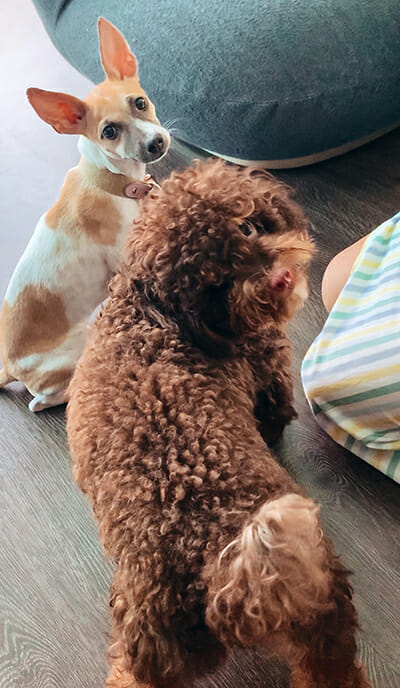
WF: Beside that scary day at the vet, did you experience any more challenges with Pixie?
CCK: The main challenge is rehabilitating Pixie. She’s got major trust issues and is scared of a lot of things. I learned a lot when I had pet training with my first baby Pepper, and I’ve been using these tricks since then for all my dogs.
For Pixie in particular, I encourage her by offering treats and lots of positive words. We just have to be patient with her, not pushing her too much. For example, she went stiff the first time we introduced her to a leash and harness. She refused to move. We tried to play with her while her harness was on. It took her awhile to realize the harness wasn’t there to stop her from moving. Slowly, she became more comfortable with it with the help of her favorite ball. When the leash was finally attached, we’d encourage her by using treats and my high-pitched voice so that she’d move towards us. Just calling her in an excited tone until she reached me. We kept doing this around the house for a few minutes every day.
When it came to walking outside, we did the same treat trick but it was harder to get her to move. We found out later on that she walks better when Penny is with her. She trusts Penny and feels safer when we’re all together.
WF: Aside from being a survivor, what would you say makes Pixie unique?
CCK: Pixie’s greeting is always like a double high five. Every morning when I greet her, she comes running and jumps with double high fives, then backs up and gives high fives again.
She also always happily responds to this jingle I made up the day we adopted her. I sang it to her that first day at the vet when she was super sick, and it was the only thing that made her tail wag despite being so sick.
For some reason, she also didn’t need potty training. She’s used to going outside to pee and poop. The only time she makes mistakes is when she doesn’t get to go out on time.
She has some weird traits that concern us though. For the first few weeks that she was with us, she’d always turn her back when someone opens her playpen—as if she’s scared of the cage sound. She also used to be scared of us approaching her with something in our hand. She’s scared of tall things as well. These things make me feel like she got into accidents a lot as a puppy and was hit every now and then.
WF: What are the things Pixie enjoys doing with you?
CCK: I call her Pixie the destroyer because she loves to destroy her toys. It seems as if that’s her life’s mission. She needs to disassemble them and ruin them. In all seriousness, she’s a real sweetie. She loves just being in the same room with me. She’s very clingy, which I love because I’m clingy as well.
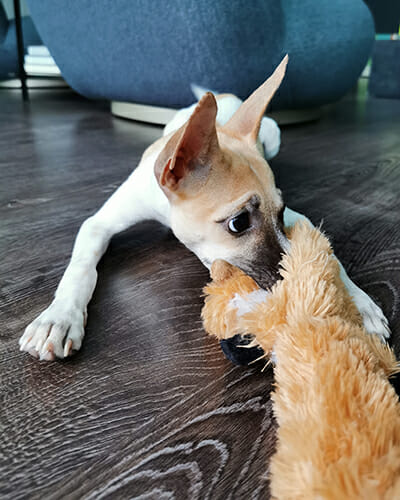
WF: As a long-time dog owner, what’s the best pet parenting tip you can give for first-time pawrents?
CCK: Pets are not just cute animals. They are family members that you need to love and nurture. It takes a lot of dedication. It’s a huge responsibility. Do your research and make sure you’re actually prepared and know what you’re getting into.
WF: What’s your advice to multiple pet pawrents?
CCK: Make sure you pay attention to your pets’ needs equally. It’s also very important to get to know your pets’ relationship with one another so you can best guide them.
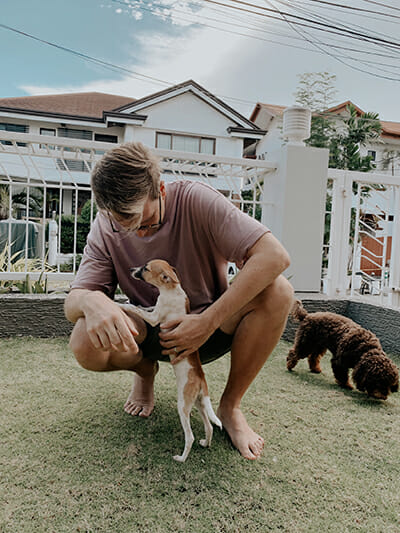
WF: Why would you personally encourage adopting animals?
CCK: Seeing how an animal can be so loving despite experiencing so much hate is the most fulfilling, inspiring, and touching thing ever.
WF: What would you say to people thinking of adopting a rescue animal?
CCK: It won’t be easy, especially if the dog you adopt has a lot of trauma and negative experiences. But despite all this, your love will be returned tenfold. Trust me! You’ll be amazed at how truly precious their souls are.
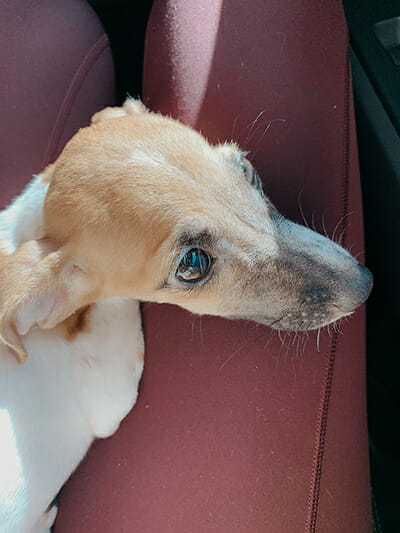
See what goes on in the life of Camille and Pixie on Instagram.
Read more rescue stories here! Do you know of an interesting pet adoption, foster, or rescue story? Share your suggestion with us by commenting below!
Leave a comment
Your email address will not be published. All fields are required.